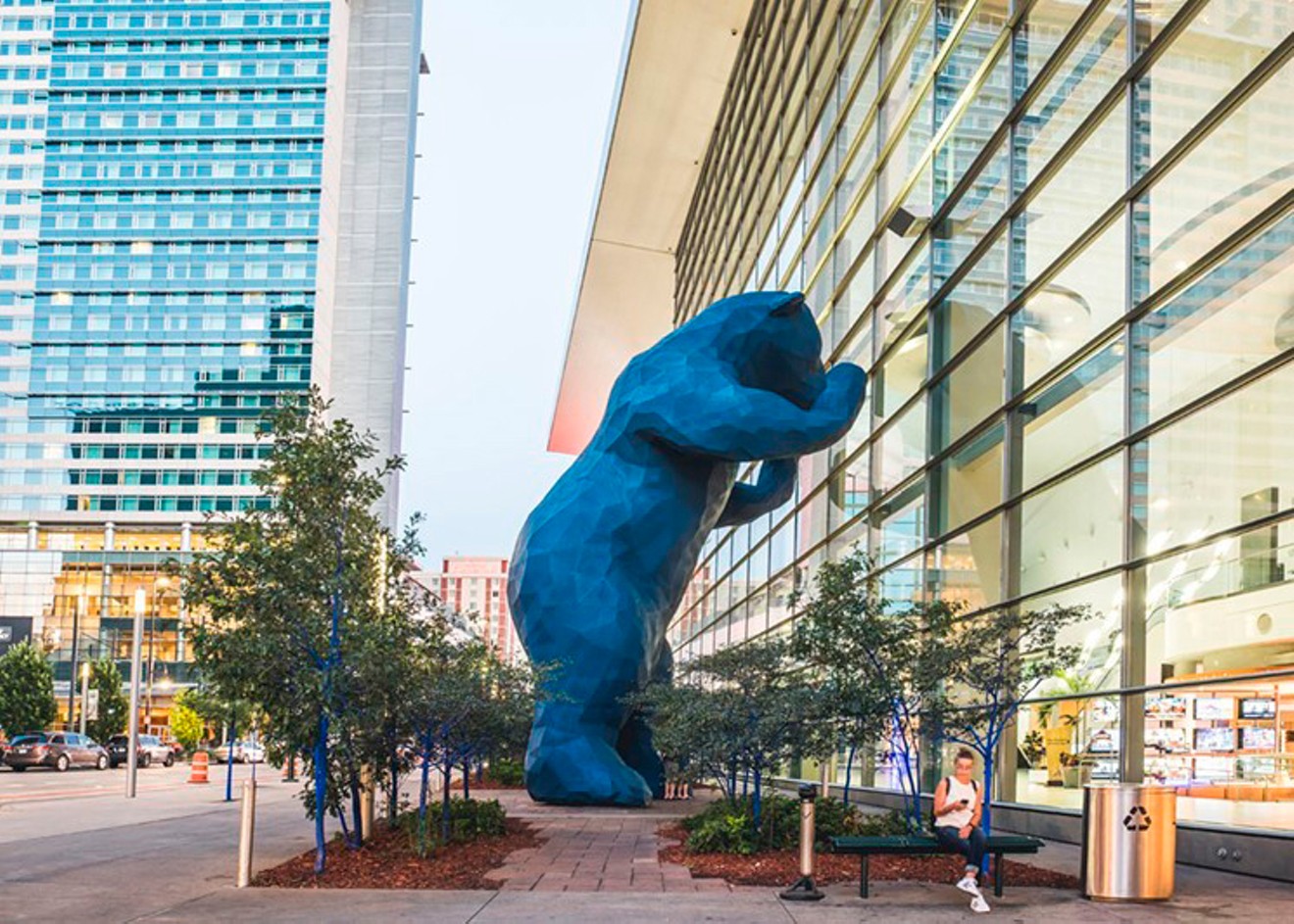It's been a roller-coaster year for the arts community. More people are visiting major arts museums than ever, all while workaday artists and smaller galleries are being priced out of their homes. Labor politics have come front-and-center in the cultural discourse, and creatives have taken to politicking for their survival. In addition, both of Denver's largest art museums embarked on major renovations, the Denver Center for the Performing Arts and the Boulder Museum of Contemporary Art endured major staff shakeups, and one of the city's most renowned artists died unexpectedly.
Arts lovers are mourning the people and places that have been lost while anticipating what's to come. Here are the ten biggest arts and culture stories of 2017.
1. DIY venues struggle after the Ghost Ship fire.
After Oakland's Ghost Ship fire, the end of 2016 was a disaster for DIY artists. Cities around the country shuttered underground spaces over safety-code compliance issues, often leaving their resident artists out in the cold. In Denver, Rhinoceropolis and Glob were the most prominent casualties. But the story doesn't end there. Convinced the City of Denver didn't do enough to support them, local artists organized under the banner Amplify Arts Denver in January. In response, the city launched the safe occupancy program, which officials tout as the first of its kind nationwide. The program gives owners and operators of unpermitted buildings a chance to work on safety compliance without necessarily facing eviction — a plan that Amplified has described as "deeply flawed." By December, the city had set up a $300,000 fund to help program participants bring their spaces up to code.
2. DCPA shakes it up.
The Denver Center for the Performing Arts Theatre Company saw big changes this year. Former artistic director Kent Thompson resigned on January 5 amid a squabble on the institution's board that led to the resignation of trustee Jim Steinberg and, ultimately, the hiring of a new artistic director, Chris Coleman, in November. Coleman, who comes from Portland Center Stage, embraces large-scale productions, nurturing the grand visions of up-and-coming playwrights. He prides himself on being a staunch champion of his actors and crew, going so far as to block a Portland Mercury theater critic from reviewing performances because the journalist would "consistently dis and disrespect the actors," he told Westword.
3. Denver loses galleries to the 'burbs.
The arts world isn't immune to Denver's rising rents. Several galleries and cultural spaces ditched the Mile High for cheaper areas, including Lakewood, in 2017. The suburb to the west is now being celebrated regionally for its creative boom, thanks in part to new tenants including Pirate, Edge, Next, Sally Centrigrade and Reed Art and Imagining.
4. Meow Wolf contemplates moving to Denver.
The George RR Martin-funded Santa Fe arts juggernaut spent the better part of 2017 in discussions with Denver creatives about whether to open a second outpost here, and it's made moves all year that indicate it's seriously considering the Mile High City. Meow Wolf donated $20,000 to Rhinoceropolis and Glob in January to rebuild, collaborated with the experimental marching band Itchy-O in March, and donated $34,000 to underground arts groups, working with the city to distribute $20,000 to creatives in May. Expect an official announcement in early 2018.
5. DIA deaccessions Michael Singer's "Interior Garden."
In April, Denver International Airport brass asked the Commission on Cultural Affairs to deaccession three public artworks that had been purchased using taxes levied on construction projects — a request not without controversy. Michael Singer, the man behind "Interior Garden," a living garden that Westword described as "the enormous, haunting ruin in the center of the C Concourse," asked the commission to allow the piece to stay. Ultimately, Denver Arts & Venues head Kent Rice sided with DIA, so the piece will be deaccessioned — but with certain stipulations, including that the airport must commission a new public artwork by Singer.
6. BMOCA staff resigns en masse.
The Boulder Museum of Contemporary Art made a New York Times headline in June when writer Ray Rinaldi reported that most of the institution's staff had quit, blasting the museum for labor violations and accusing executive director David Dadone of abuse. The board investigated the staff's claims and determined that they weren't substantiated. Former staffers maintain the investigation was flawed.
7. The Denver Film Society joins an antitrust lawsuit against Landmark Theatres.
As Landmark Theatres — which owns the Mayan, Esquire, Chez Artiste and Greenwood Village theaters, along with dozens of other independent venues nationwide — introduces audiences to foreign and independent films that otherwise might never find a place to screen, it negotiates exclusive deals with distributors that prevent smaller, truly independent art houses like the Sie FilmCenter from booking foreign and indie hits. At least that's according to an antitrust lawsuit filed in September against Landmark by the Denver Film Society and theaters across the country.
8. Lawrence Argent dies.
“I See What You Mean,” better known as the Big Blue Bear, has watched over the Colorado Convention Center since 2005 and is one of Denver's most popular pieces of public art. The sculpture's creator, artist Lawrence Argent, died on October 4, from complications related to surgery. Argent, whose work graces other spots in Denver and cities around the world, was known for incorporating revolutionary technologies, including 3-D printing, into his creative process.
9. MCA announces an $18 million renovation.
In late October, the Museum of Contemporary Art Denver launched an $18 million fundraising campaign this year to expand its current facilities. A response to increasing attendance, the renovations will create more public space at the museum and more areas for music and cultural events that attract a younger demographic — the lifeblood of the museum's future and the largest population it serves. The museum, which was designed by world-renowned Ghanaian-British architect David Adjaye, will also begin aggressively commissioning works by Denver artists, build a rooftop performance stage, and increase its educational programming.
10. DAM shuts down the Gio Ponti-designed North Building.
The Denver Art Museum shuttered its North Building in November ahead of a major remodel that has closed the iconic building — named after its designer, legendary Italian architect Gio Ponti — for three years. The project, five years in the making, is expected to cost $150 million, a financial obligation that was helped in November by $35.5 million from a bond initiative that will be matched three-to-one by private funding. The building will reopen in 2021, in time to celebrate its fiftieth anniversary.
[
{
"name": "Air - MediumRectangle - Inline Content - Mobile Display Size",
"component": "12017618",
"insertPoint": "2",
"requiredCountToDisplay": "2"
},{
"name": "Editor Picks",
"component": "17242653",
"insertPoint": "4",
"requiredCountToDisplay": "1"
},{
"name": "Inline Links",
"component": "18838239",
"insertPoint": "8th",
"startingPoint": 8,
"requiredCountToDisplay": "7",
"maxInsertions": 25
},{
"name": "Air - MediumRectangle - Combo - Inline Content",
"component": "17261320",
"insertPoint": "8th",
"startingPoint": 8,
"requiredCountToDisplay": "7",
"maxInsertions": 25
},{
"name": "Inline Links",
"component": "18838239",
"insertPoint": "8th",
"startingPoint": 12,
"requiredCountToDisplay": "11",
"maxInsertions": 25
},{
"name": "Air - Leaderboard Tower - Combo - Inline Content",
"component": "17261321",
"insertPoint": "8th",
"startingPoint": 12,
"requiredCountToDisplay": "11",
"maxInsertions": 25
}
]















